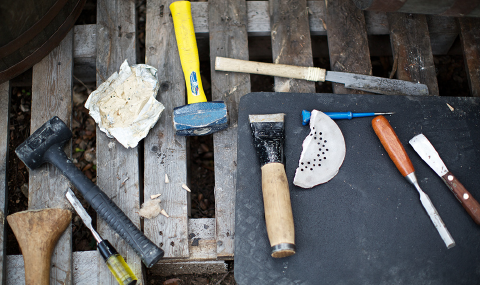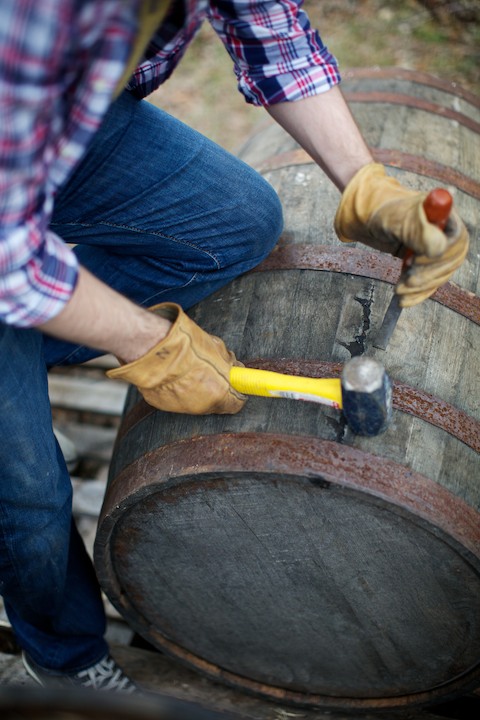DELICIOUS IS IN THE DETAILS
Swift Single Malt captures authentic Scottish whisky making traditions and brings them home to Texas. We do everything from grain to glass in pursuit of the finest finish. This labor of love is the best part of our story.
CLICK ON THE PHOTOS TO LEARN MORE ABOUT EACH STEP
1. MASH
WE BEGIN WITH 100% SCOTTISH TWO-ROW MALTED BARLEY
To get at all of the grain’s sugars, Amanda hand-mills 400 pound batches into a course flour, checking the grind by sight.
We want our barley hulls intact to act as natural drainage beds coming out of the mash tun.
When it looks just right, Nick carries the milled grain, or grist, into the mash tun. Adding pure water, he cooks the mash slowly over an open flame.
We filter first, then add natural brewing salts to bring our purified aquifer water in line with waters native to Northern Ireland and Speyside, Scotland.
Nick tends and stirs our barley water, or wort, with a handmade wooden paddle, carefully toasting and caramelizing the sugars without ever letting them burn.
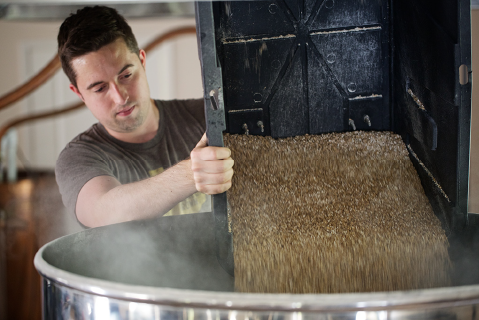
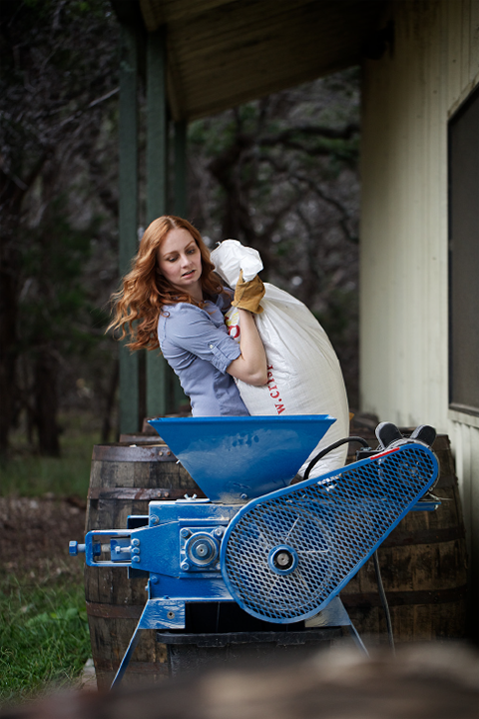
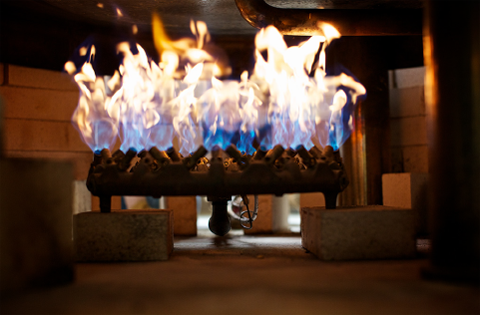
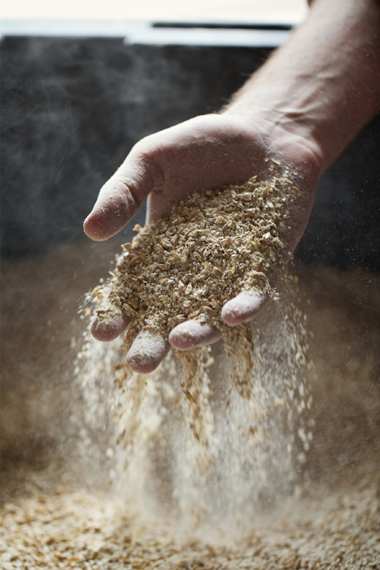
2. FERMENT
WE FERMENT OUR MASH WITH SELECT, SINGLE MALT YEAST.
We take the hot wort from the mash tun, cool it, and carefully strain it to control the flavors produced by our long ferment.
Then, we add the select, single malt yeast we tracked down in Speyside, Scotland, and let it do the work for a week or so. With the ferment complete, we’re at 10% alcohol.
We tested hundreds of grain-yeast combinations to find the perfect pairing for our flavor profile. Our yeast is an offshoot of a traditional strand that is perfectly suited to ferment barley — just right for our single malt!
While the yeast ferments, we keep busy coopering our Kentucky bourbon barrels and sherry casks, and fixing any leaks or weeps by hand.
After a long journey from Kentucky or Jerez, Spain, a leak here or there is only to be expected.
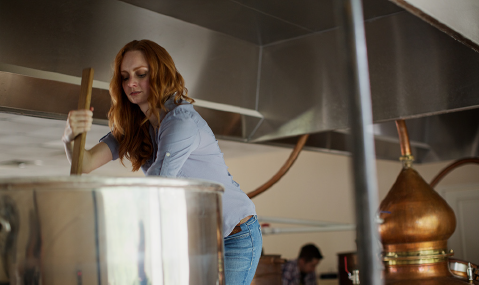
3. DISTILL
WE TWICE-DISTILL BUCKET-BY-BUCKET, FINE-TUNING THE SPIRIT BY TASTE
We selected our hand-hammered copper pot stills from Portugal for their superior flavor production. Curves and minimal welds preserve the smooth, creamy flavor of our heritage malt.
Edges that catch, condense, and create vapor fall, or reflux, make for a peppery bite we prefer to avoid.
We put a full day into our big still, and another into our small, polishing still. Running slowly, bucket-by-bucket, we take tight cuts off each still to guide the entire process by taste.
We run our stills at a searing 800° Celsius. As vapor emerges from the big still’s arm, we chill it to block musty or oily tastes. We sample the low wine to find cutoff points, excluding heads and tails from the take. At this point, we’ve achieved 40% alcohol.
We use a low-water glycol chiller to mimic the icy river waters or snowmelt used in Scotland — but in a way that’s environmentally friendly to Texas.
The small still works the same way, taking our spirit to between 62% and 64% alcohol. We patiently take bucket-by-bucket cuts, pouring the good stuff through a copper funnel directly into a Kentucky bourbon barrel to age.
The first bucket off the small still is like cotton candy, the second like apricot. The third offers more malt, and the last tastes of toasted almonds.
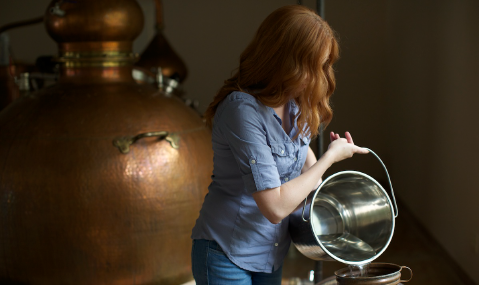

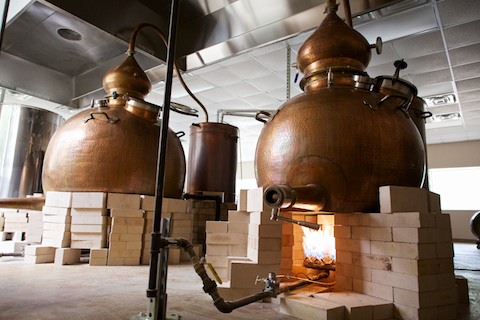
4. FINISH
WE USE KENTUCKY BOURBON BARRELS AND OLOROSO SHERRY CASKS FROM SPAIN.
To preserve our creamy, smooth malt and let subtle oak shine through, we sourced lightly charred barrels previously used to age outstanding Kentucky bourbon. Darker charring opens the door to a smokey, peppery bite we prefer to avoid.
We collected — and tested — a ton of bourbon barrel staves before we found the ones that were just right.
For nearly a year, every drop of our spirit is aged in these Kentucky bourbon barrels to extract toasted vanilla, carmelized sugar, ripe fruit, and subtle orange notes from the old oak.
We attend to every detail to create our flavor profile. As great whiskey makers in Scotland and Japan do, we stabilize humidity to get optimal air-to-alcohol ratios to extract and concentrate flavors from this wonderful wood. And, since ultraviolet rays can degrade organic flavor compounds, we protect our aging spirits with low-UV lighting and tinted windows.
Though the angel’s share means we lose 10% of the spirit, our patience is well worth it. How do we know when it’s ready? By taste.
Spirits age more quickly near the equator than in cold climates such as Scotland — the Texas heat expands oak fibers in the heat of the day and contracting them at night, letting great flavors out faster.
Some of the finest whiskeys in the world are finished in Oloroso sherry casks — ours is, too. To make it happen, we tried every sherry we could find and tracked our favorite to a bodega in Jerez, Spain.
Since three barrels of finely aged spirit fit into each Oloroso sherry finishing cask, Nick sips, matches, and balances barrels to maintain our flavor profile — and ensure that every drop attains the finest finish.
We collected and tested staves from this bodega’s Oloroso sherry casks until we found the best. These marvelous casks impart a rich, slightly sweet finish to our spirit — including hints of chocolate, rose, and ripe peaches.
Our spirit is fine and flavorful right out of the cask — we never chill filter the way many big distilleries do.


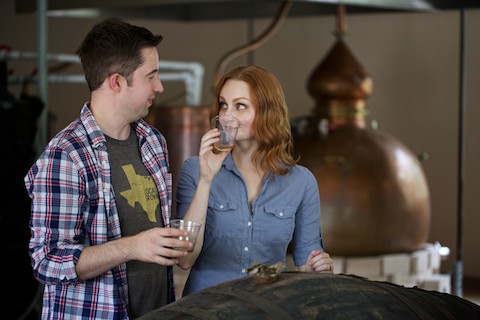
5. COOPER
WE TREAT OUR BARRELS AND CASKS WITH TENDER LOVING CARE.
We treat our bourbon barrels and sherry casks with tender loving care. After a long journey from Kentucky or Jerez, Spain, a leak here or there is only to be expected.
Our resident barrel cooper, Nick, maintains our Kentucky bourbon barrels and Oloroso sherry casks by hand. He checks each hoop for tightness and places parchment between staves as needed.
Between batches, we rinse the barrels and let them swell overnight. To mend larger leaks, Nick “the cooper” hammers in pieces of French oak, or spiles, that swell into place. For smaller or tricky spots, he shims natural cattail reed into the seams.
Sometimes our spirit seeps right through a barrel’s woodgrain. In that case, we sand the grain and rub a mixture of wax and chalk over the wood to seal up the weep. Any and all sealants we use are all natural.
Aging and finishing 100% of our spirit in Kentucky bourbon barrels and Oloroso sherry casks takes time and energy — but we do it for superior flavor. And, we’d rather lose a little whiskey to the angel’s share or an occasional leak or weep than introduce unnecessary chemicals into our process.
